At SunClean, LLC, we are constantly challenging the status quo, offering innovative products driven by clean, renewable sources of energy. To learn more about solar, wind, ocean and geothermal energy, efforts to conserve energy, and devastating climate change due to pollution, click on the Tabs below.
- Solar
- Wind
- Ocean
- Geothermal
- Conservation
- Climate Change
Photovoltaics 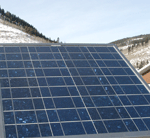 Photovoltaics (PV) are what we commonly recognize as solar panels. PV's are silent, non-polluting, and can be used anywhere, which gives them many advantages over other forms of energy transformation. However, they are often expensive in comparison to grid electricity. They make great sense when the alternative is wiring or creating the grid to transport energy to where it is needed, or when used to power intermittent-duty devices, such as trash compactors or wireless transmitters.
Photovoltaics (PV) are what we commonly recognize as solar panels. PV's are silent, non-polluting, and can be used anywhere, which gives them many advantages over other forms of energy transformation. However, they are often expensive in comparison to grid electricity. They make great sense when the alternative is wiring or creating the grid to transport energy to where it is needed, or when used to power intermittent-duty devices, such as trash compactors or wireless transmitters.
The cells are typically made of semiconductor materials, such as silicon. When light strikes the cell, it excites the electrons in the atoms of the semiconductor, causing a current to flow. Light energy strikes electrons on the top layer of silicon, energizing them and making them "jump" across the insulator to the other layer. Once the electron has made the jump, it tends to travel back to its original state, doing "work" in the process. In a photovoltaic panel, the electron flows through a circuit to return to its original position. This flow of electrons is what is used to power devices or charge batteries.
Passive Solar Passive solar is another way to use the sun's natural energy to light rooms or heat buildings, reducing energy costs. Often, mirrors and windows are used to direct solar energy to the proper locations.
 Photovoltaics (PV) are what we commonly recognize as solar panels. PV's are silent, non-polluting, and can be used anywhere, which gives them many advantages over other forms of energy transformation. However, they are often expensive in comparison to grid electricity. They make great sense when the alternative is wiring or creating the grid to transport energy to where it is needed, or when used to power intermittent-duty devices, such as trash compactors or wireless transmitters.
Photovoltaics (PV) are what we commonly recognize as solar panels. PV's are silent, non-polluting, and can be used anywhere, which gives them many advantages over other forms of energy transformation. However, they are often expensive in comparison to grid electricity. They make great sense when the alternative is wiring or creating the grid to transport energy to where it is needed, or when used to power intermittent-duty devices, such as trash compactors or wireless transmitters.The cells are typically made of semiconductor materials, such as silicon. When light strikes the cell, it excites the electrons in the atoms of the semiconductor, causing a current to flow. Light energy strikes electrons on the top layer of silicon, energizing them and making them "jump" across the insulator to the other layer. Once the electron has made the jump, it tends to travel back to its original state, doing "work" in the process. In a photovoltaic panel, the electron flows through a circuit to return to its original position. This flow of electrons is what is used to power devices or charge batteries.
Passive Solar Passive solar is another way to use the sun's natural energy to light rooms or heat buildings, reducing energy costs. Often, mirrors and windows are used to direct solar energy to the proper locations.
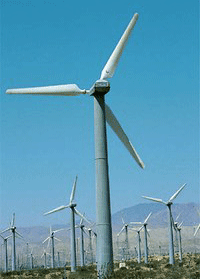 Humans have harnessed wind power for thousands of years. Sailboats and windmills both rely on moving air masses to generate power. Modern day windmills have taken the harnessing of wind power to new levels, sometimes generating power for a thousand homes per windmill.
Humans have harnessed wind power for thousands of years. Sailboats and windmills both rely on moving air masses to generate power. Modern day windmills have taken the harnessing of wind power to new levels, sometimes generating power for a thousand homes per windmill.Wind farms are one of the fastest growing sectors of renewable energy production. Huge windmills are placed in areas with reliable wind patterns, and have become less expensive to install than almost any other form of electrical production.
In the future, more windmills will populate the countryside, suburbs, cities and even oceans. Millions of dollars worth of research is being done to make offshore wind farms a reality in the near future.
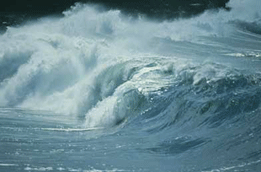 Researchers have devised many creative methods to generate energy from the sea, without producing pollution. Most are in the prototype stage, but several hold a good deal of promise. The ocean is an enormous, untapped source of energy.
Researchers have devised many creative methods to generate energy from the sea, without producing pollution. Most are in the prototype stage, but several hold a good deal of promise. The ocean is an enormous, untapped source of energy.The methods for capturing ocean energy are generally based on waves, tides or temperature differentials. Waves are very concentrated forms of energy, but are difficult to harness; the equipment is easily damaged. Tides are reliable and easier to tap, but often, tidal generators interfere with shipping or they are widely dispersed, creating transmission difficulties.
Ocean thermal energy conversion (OTEC) has been well-tested, but is not likely to be a major power supply because it is expensive, highly distributed, and may have adverse effects on marine creatures because the devices alter the temperature of the water at different depths.
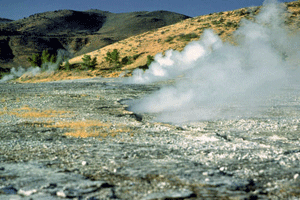 Geothermal energy holds tremendous promise in many parts of the world. It uses the heat of the earth (underground "volcanoes") to create energy Production Underground (usually over 10km deep), the earth is quite hot (500+°C).
Geothermal energy holds tremendous promise in many parts of the world. It uses the heat of the earth (underground "volcanoes") to create energy Production Underground (usually over 10km deep), the earth is quite hot (500+°C). Sometimes, at hot springs, this heat wells up to the surface. At these points, water can be turned to steam. With a turbine and generator, we can harness the power created by this rapid change in state. Companies like Calpine and Cathness are turning these heat resources into big money.
Geothermal heat pumps may not be as thrilling as geothermal turbines, heat pumps are actually much more practical methods for capturing geothermal energy and using it close to the point of capture. Basically, most anywhere you go, the ground is about 55 degrees Farenheit. That "heat" can be used to keep buildings at a constant temperature. So, heat pumps reduce heating bills in the winter and cooling bills in the summer.
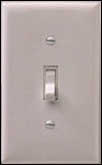 Conservation methods and technologies are generally the most economical way to clean up and start saving money now. By merely replacing bulbs, boilers, blowers, HVAC systems, garbage trucks, and appliances with new, more efficient units, you can save big money. Look for the Energy Star logo on appliances the next time you are at the store.
Conservation methods and technologies are generally the most economical way to clean up and start saving money now. By merely replacing bulbs, boilers, blowers, HVAC systems, garbage trucks, and appliances with new, more efficient units, you can save big money. Look for the Energy Star logo on appliances the next time you are at the store. These devices are more energy efficient and will reduce your energy bill.Take a look at the Fortune 500 Companies in the U.S. and see what they are doing to save money and prevent pollution. You will find that pollution is not only destructive, but it’s also a waste of money.Companies and countries that take the initiative today conserving our resources will be more competitive tomorrow. By relying heavily on oil, we deplete resources and pump funds to the Middle East that could be staying here at home. Keeping the status quo will make you extinct. The technology is there, so use it!
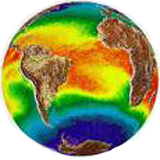
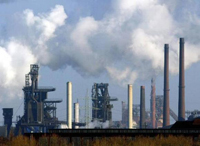 Climate change and pollution affect human health to a large degree. One of the many fears associated with global warming is the melting of the polar ice caps increasing the level of the seas, enabling hurricanes to flourish more easily, flooding low-lying areas. Pollution causes birth defects (mercury), asthma and cancer (particulates and many other pollutants), acid rain and other more localized health problems. .
Climate change and pollution affect human health to a large degree. One of the many fears associated with global warming is the melting of the polar ice caps increasing the level of the seas, enabling hurricanes to flourish more easily, flooding low-lying areas. Pollution causes birth defects (mercury), asthma and cancer (particulates and many other pollutants), acid rain and other more localized health problems. .